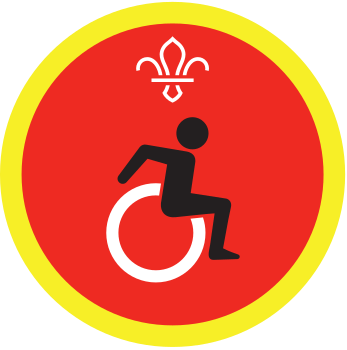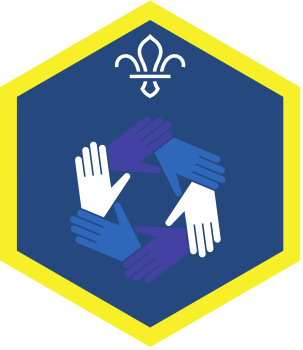
Play Silent Sprint
You’ll need
Before you begin
- Use the safety checklist to help you plan and risk assess your activity. There's also more guidance to help you carry out your risk assessment, including examples.
- Make sure all young people and adults involved in the activity know how to take part safely.
- Make sure you’ll have enough adult helpers. You may need some parents and carers to help.
Running this activity
- Gather everyone in a circle and make sure everyone knows how to fingerspell. Try our activity to learn to spell with fingerspelling, and you may wish to remind everyone of the alphabet.
- When everyone's had time to practice the letters, explain that you're going to play a game called ‘Silent Sprint.’
- Everyone should get into teams and each team should get into a line.
- A player who’s confident with understanding finger spelling should be the team captain. The team captain should be at one end of the line. They'll be given a word to spell by the person running the activity.
- When you shout ‘Go!’, the team captains should go and find out the chosen word from the person leading the activity, then return to the back of the group.
- The team captain should get the attention of the person in front of them by gently tapping their shoulder. This person should turn around and face the team captain.
- The team captain should fingerspell the word to the next person in line. The second person then spells the word to the next person.
- Keep going down the line, with the person at the back of the line spelling the word to the person in front of them, all the way to the front of the line.
- As the fingerspelling moves up the line, the team captain should move to stand at the front. The last player to have a turn should spell the word to the team captain.
- After the final person has signed the word, the team captain should tell everyone if they've managed to pass the correct word down the line. The first team to get the right word down the line, wins.
- Tell everyone that although the goal’s to get your message down the line as quickly as possible, it's more important to be understood.
- Once you've raced once, you could change the team captain, use longer words, or have people further spread out in their line to make it harder.
Reflection
This activity helped you learn another way to communicate. Why is it important to be able to communicate in lots of different ways? When might it be useful to be able to fingerspell? What’s the most important thing – being clear so people can understand you, or being fast to impress people?
This activity also helped you to respect people. How do you think it feels if lots of people can’t understand or talk to you? Do you think it’s useful for everyone to know a little sign language? When might you use sign language to talk to someone?
Safety
All activities must be safely managed. You must complete a thorough risk assessment and take appropriate steps to reduce risk. Use the safety checklist to help you plan and risk assess your activity. Always get approval for the activity, and have suitable supervision and an InTouch process.
- To make this activity easier, people could work in pairs if they want to. You could also give people a copy of the BSL fingerspelling alphabet sheets to remind them of the signs.
- To make this activity easier or harder, you could vary the length of the word and the size of groups. You can play more than once, making it trickier each time. How long a word can people spell?
- If anyone doesn’t like physical contact, they don’t have to tap anyone’s shoulders (or be tapped on the shoulder). They could make a noise instead.
- You should try a practice run before your race to make sure that everyone in the group is comfortable and understands how to play.
All Scout activities should be inclusive and accessible.
Try learning the Scout Promise (or a song) in sign language.
If anyone uses fingerspelling or sign language, they could talk to the others about their experiences.

